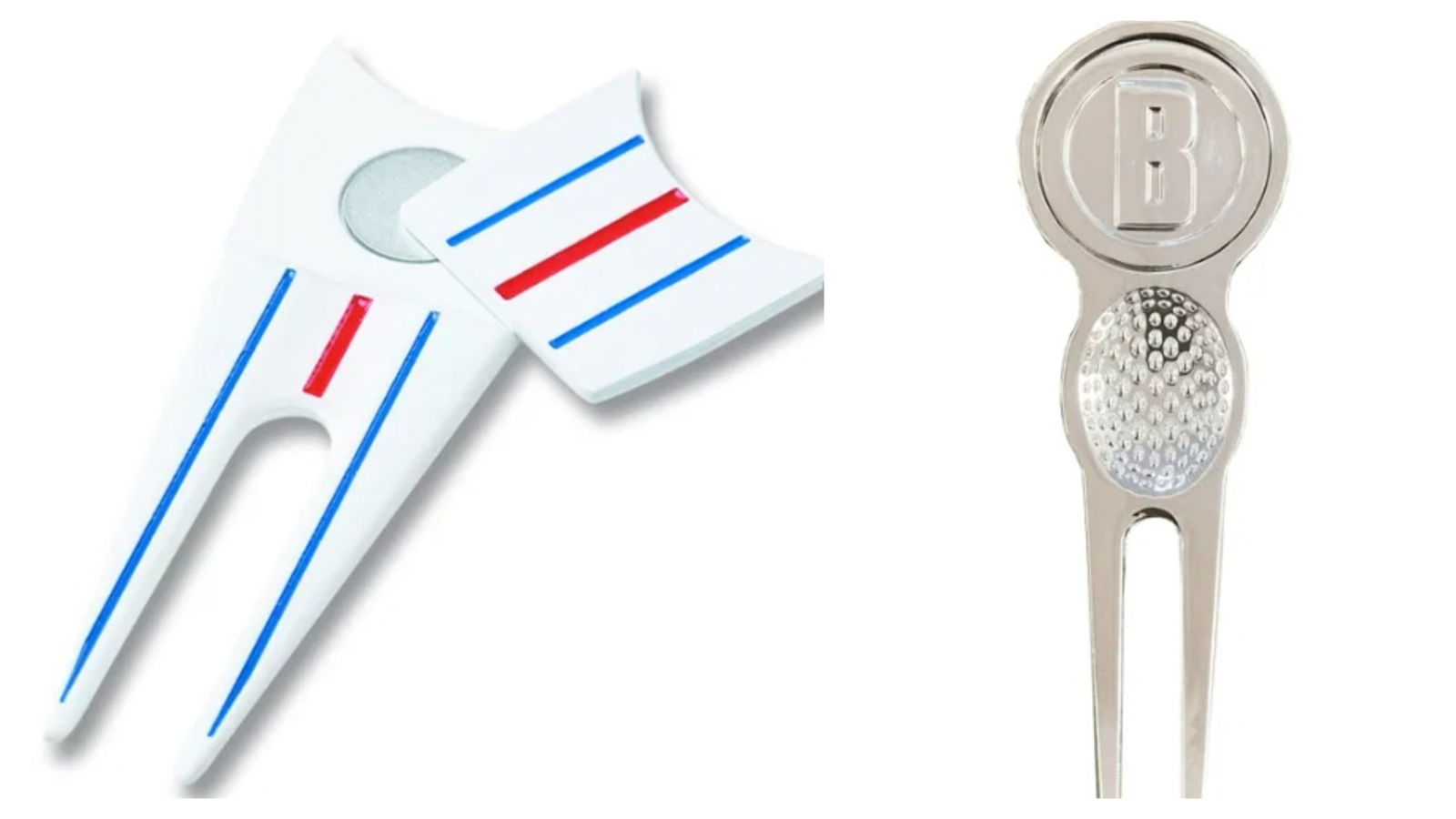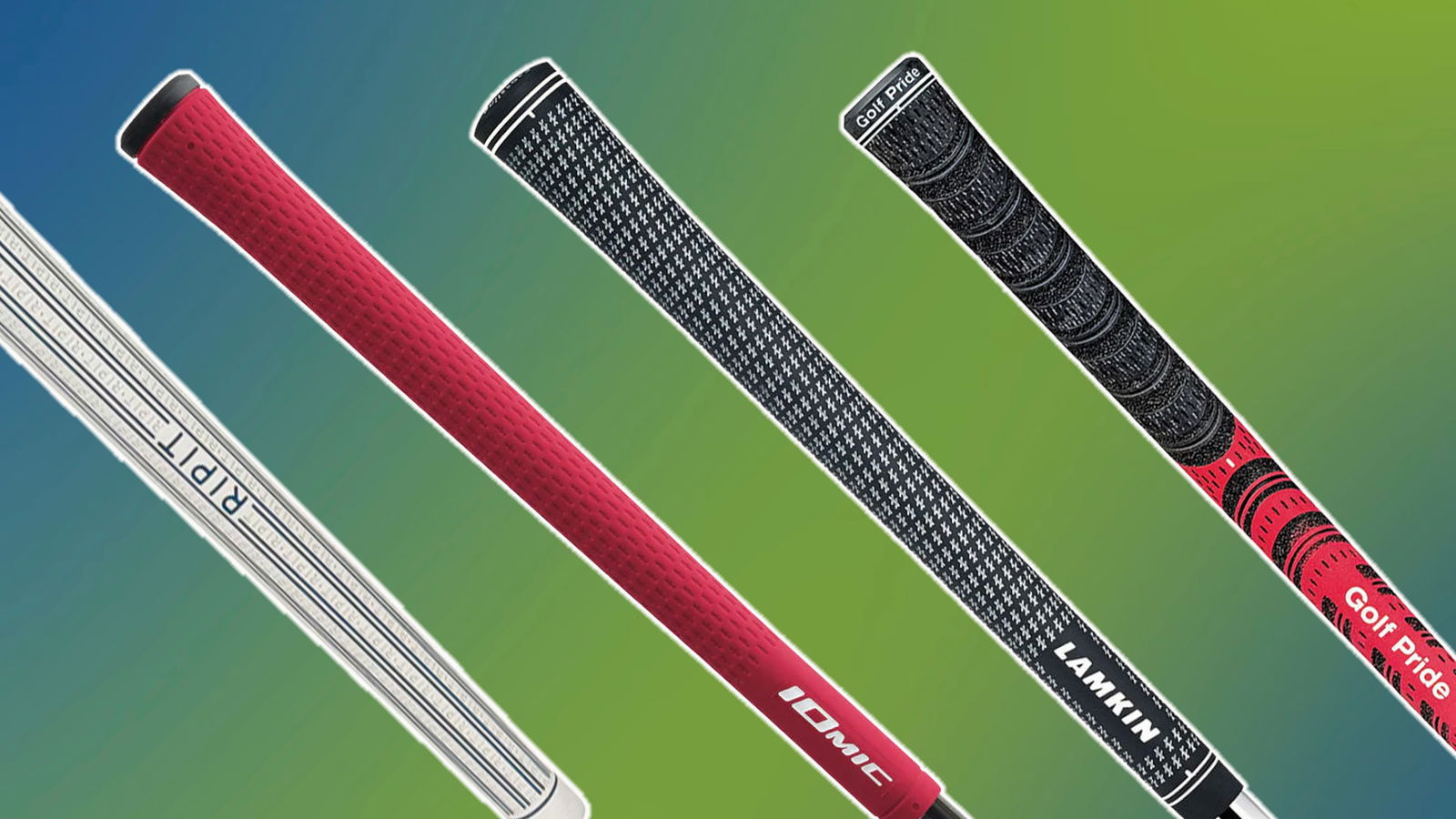Best Golf Gloves 2025: Buyer's Guide and Everything You Need To Know
From the purest Cabretta to cosy winter options, these are the best golf gloves you can buy right now.

Your hands are the only point of contact between you and the golf club, so ensuring you have one of the best golf gloves can dramatically improve feel and confidence while preventing blisters.
Golf gloves come in a variety of designs, materials, and colours, so it can be tricky to pick the right one for you. And with almost all major brands producing their own versions, golf gloves can often appear to be much of a muchness to the untrained eye.
Thankfully, here at GolfMagic, we've tested almost every glove on the shelf over the years putting them through their paces over countless rounds of golf. And we can confirm that there are vast differences in durability, performance and comfort to be had between brands and models.
From FootJoy's classic Pure Touch glove to G/FORE's snazzy fashion-led gloves, there is a design to suit every golfer.
In this guide, we will walk you through the best golf gloves on the market in 2025 to help you decide which is the best fit for you, whether you're a purist who relishes the luxurious feel of cabretta leather, or want the durability and value of a synthetic glove.
With more gloves out there than ever before to suit a range of conditions, we're also covering the vast array of warm weather, winter and rain gloves to help you find the perfect glove to suit any climate.
Some golf gloves offer premium feel. Some offer durability. Few have it all. Below, our favourites you can buy right now, starting off with the absolute best.
The best golf glove of 2025
GolfMagic may receive a small advertising or affiliate commission if you buy via our links. Pricing may vary.
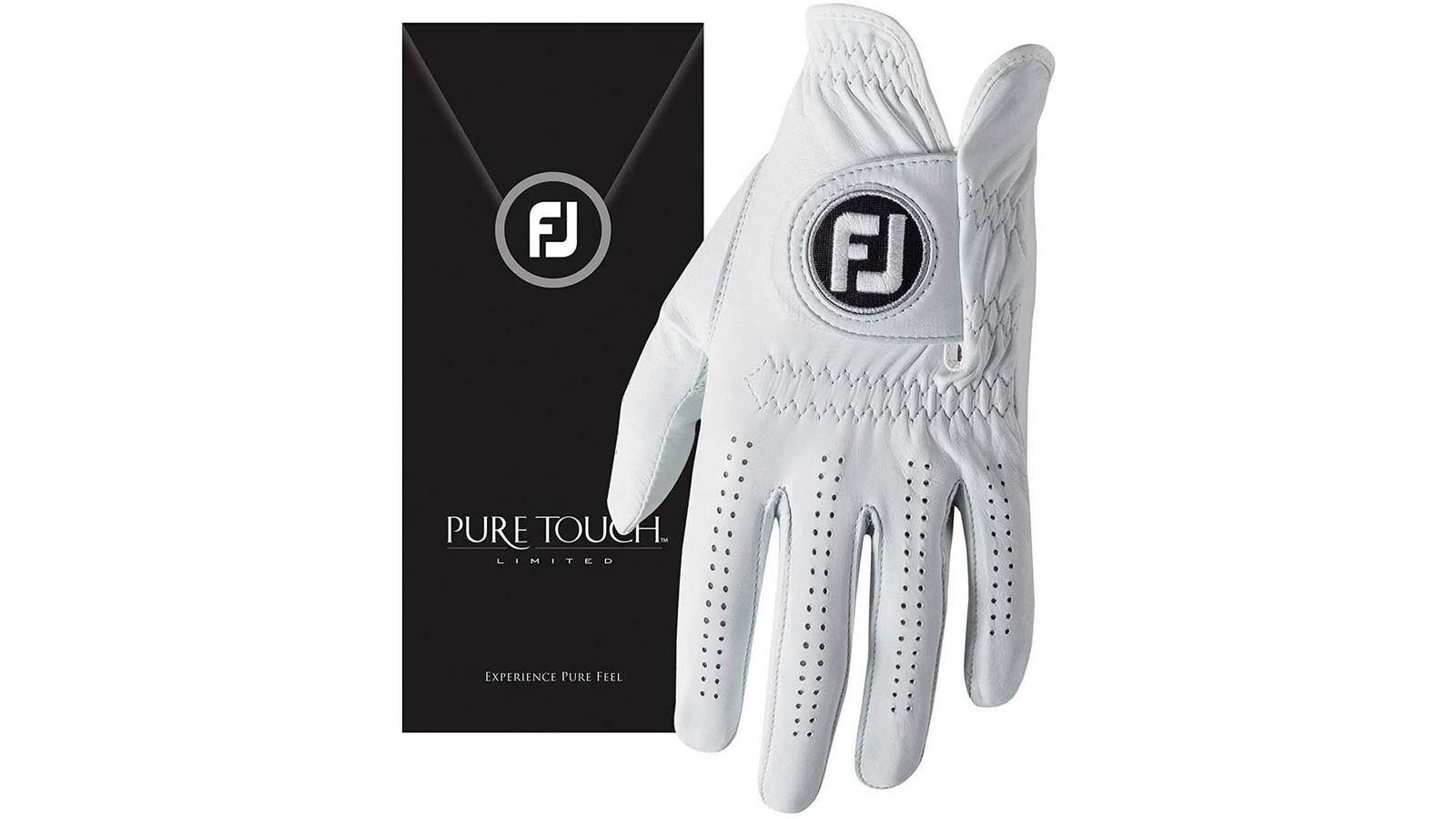
FootJoy Pure Touch Limited
Pros:
- Premium feel and incredibly soft
- Classic Styling
Cons:
- Not as durable as other gloves on this list
Price: £24.99
FootJoy is the no.1 brand for golf gloves, which is reflected by its dominance on Tour. The Pure Touch is the brand's most premium offering and it delivers incredible feel, softness snd comfort.
Made from ultra-thin Cabretta leather, this glove feels fantastic on hand, and provides excellent grip.
Strategic elastic placements ensure the Pure Touch really does fit like a glove, and it delivers just the right amount of give to mould to your hand only increasing in comfort over time.
The numerous perforations on the fingers also ensure the glove remains breathable over its life cycle. The all white design and large FootJoy logo finish off what's arguably the classiest glove in golf.
The buttery softness of thin leather on offer, however, does come at the cost of durability. This obviously isn't an issue for Tour Pros who will be getting sent new gloves by the dozens, but for the average joe, the Pure Touch might not deliver the durability everyone is after.
The best leather golf gloves for 2025
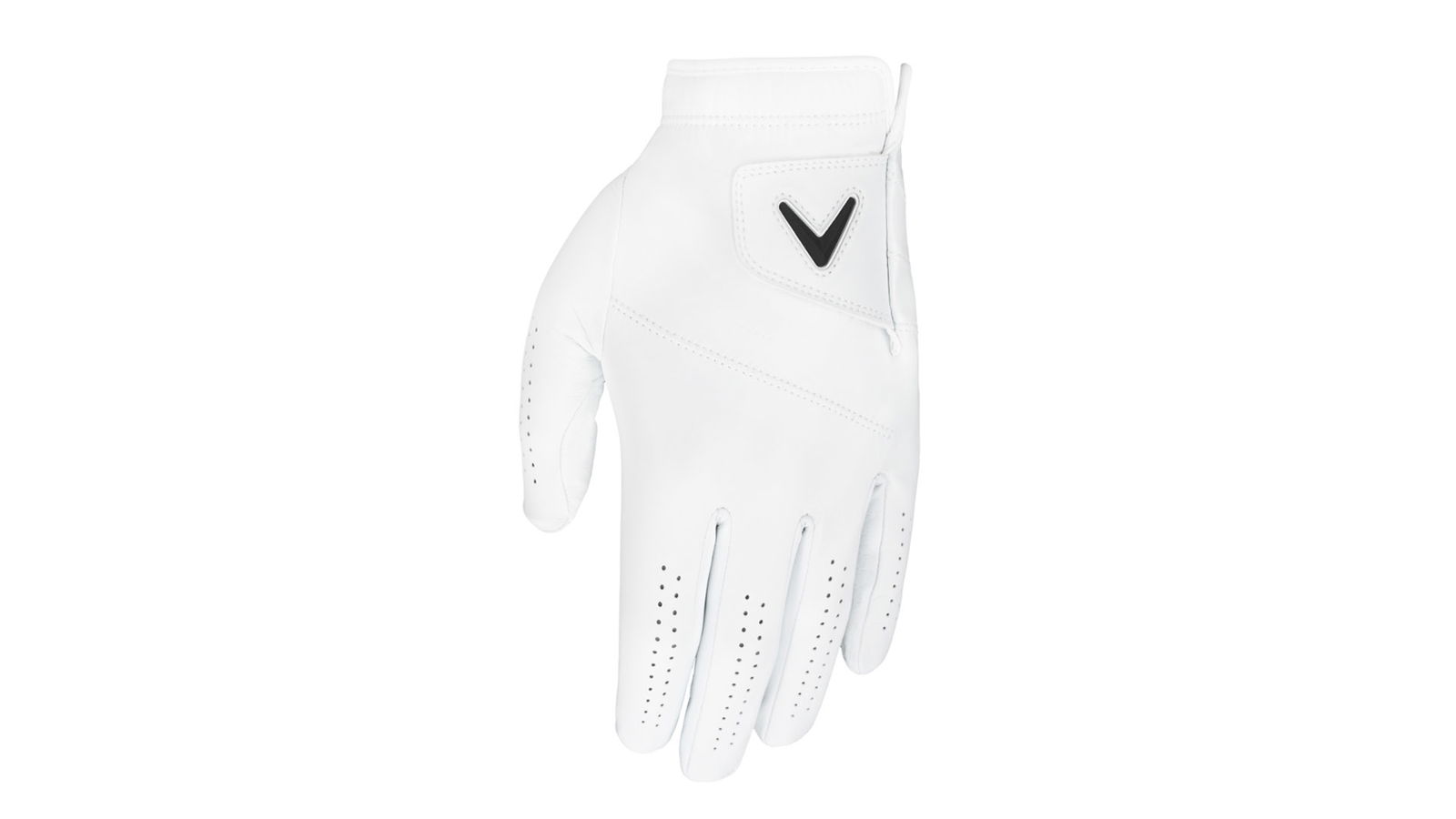
Callaway Tour Authentic
Pros:
- Super sleek design
- Cabretta leather is thin and buttery soft
- Extremely comfortable
Cons:
- Expensive, but easy to find them on discount
Price: £24
While FootJoy still rule the roost when it comes to tour-approved gloves, Callaway's Tour Authentic comes in at a close second, delivering fantastic feel and thin, soft Cabretta Leather with minimalist branding that oozes class.
The AAA leather Callaway have used is infused with a material the brand calls Griptac 2.0™, giving it an extra sense of purchase on your clubs and providing a locked-in feel to help you swing with confidence. Put simply, it's the glove of choice for players like Jon Rahm and Xander Schauffele for a reason.
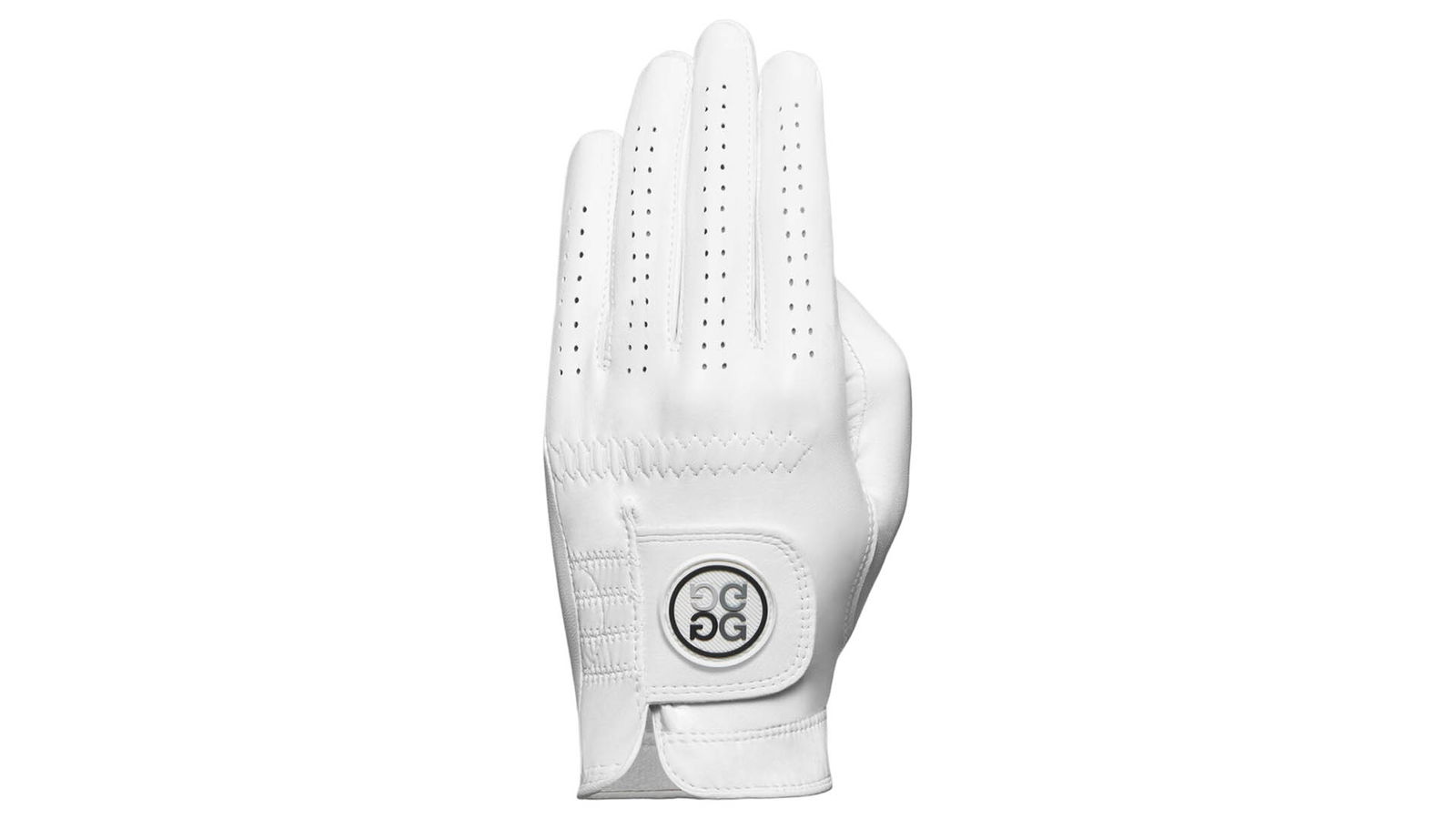
G/FORE Signature Golf Glove
Pros:
- Tonal velcro closure looks neat
- Comes in a wide variety of colours
- Premium Cabretta leather construction
Cons:
- On the pricey end
Price: £25
G/FORE love to do things a bit different, and the Signature glove is a perfect example of that. Most gloves on this list keep it pretty simple, however G/Fore has mixes things up with a splash of colour and a variety of tonal velcro enclosures, and we're all for it.
In addition to a clean white option, a variety of tasteful pastels are also on offer for a classic, colourful look, including light blue, yellow and pink.
In terms of construction, G/FORE has gone for 100% AA Cabretta leather and it feels great, with just enough give to allow the glove to slightly alter overtime to create the perfect snug fit.
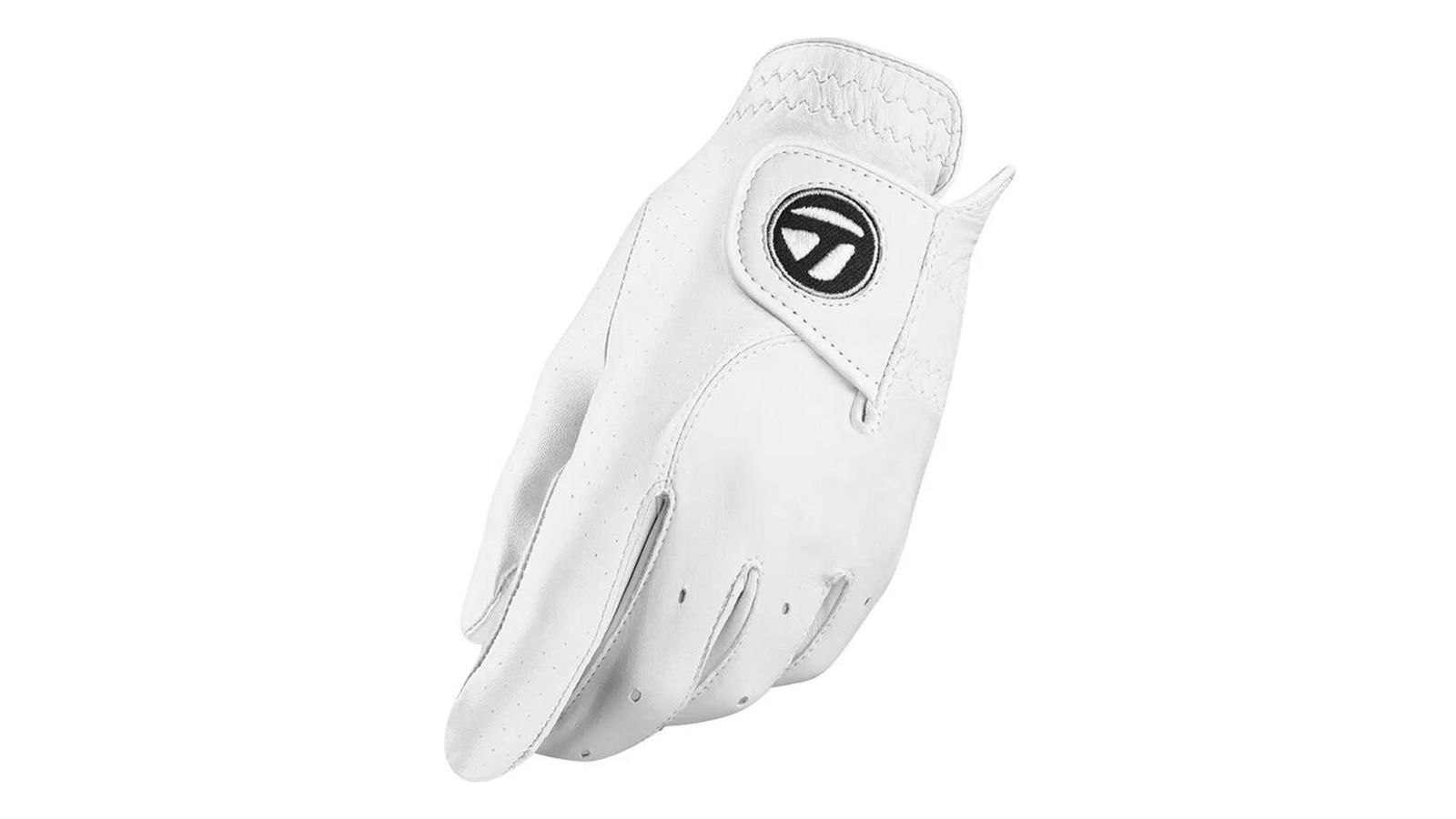
TaylorMade Tour Preferred
Pros:
- Sophisticated yet simple design
- Great value for a Cabretta Glove
Cons:
- Could benefit from additional perforation to improve breathability
Price: £21.99
The glove of choice for TaylorMade's Tour pros, the Tour preferred is made from AAA Cabretta leather, which has a lovely soft feel that also delivers tacky grip that we absolutely love.
The glove also features a contoured wrist with a stretch fit tab, and the wristband also has moisture wicking properties to help keep your hands cool and dry during hot rounds.
The super thin leather delivers premium feel, while the simple yet sleek design provides that Tour look that brings any outfit together. And priced significantly lower than its full cabretta rivals, it represents great value given its pro credentials.
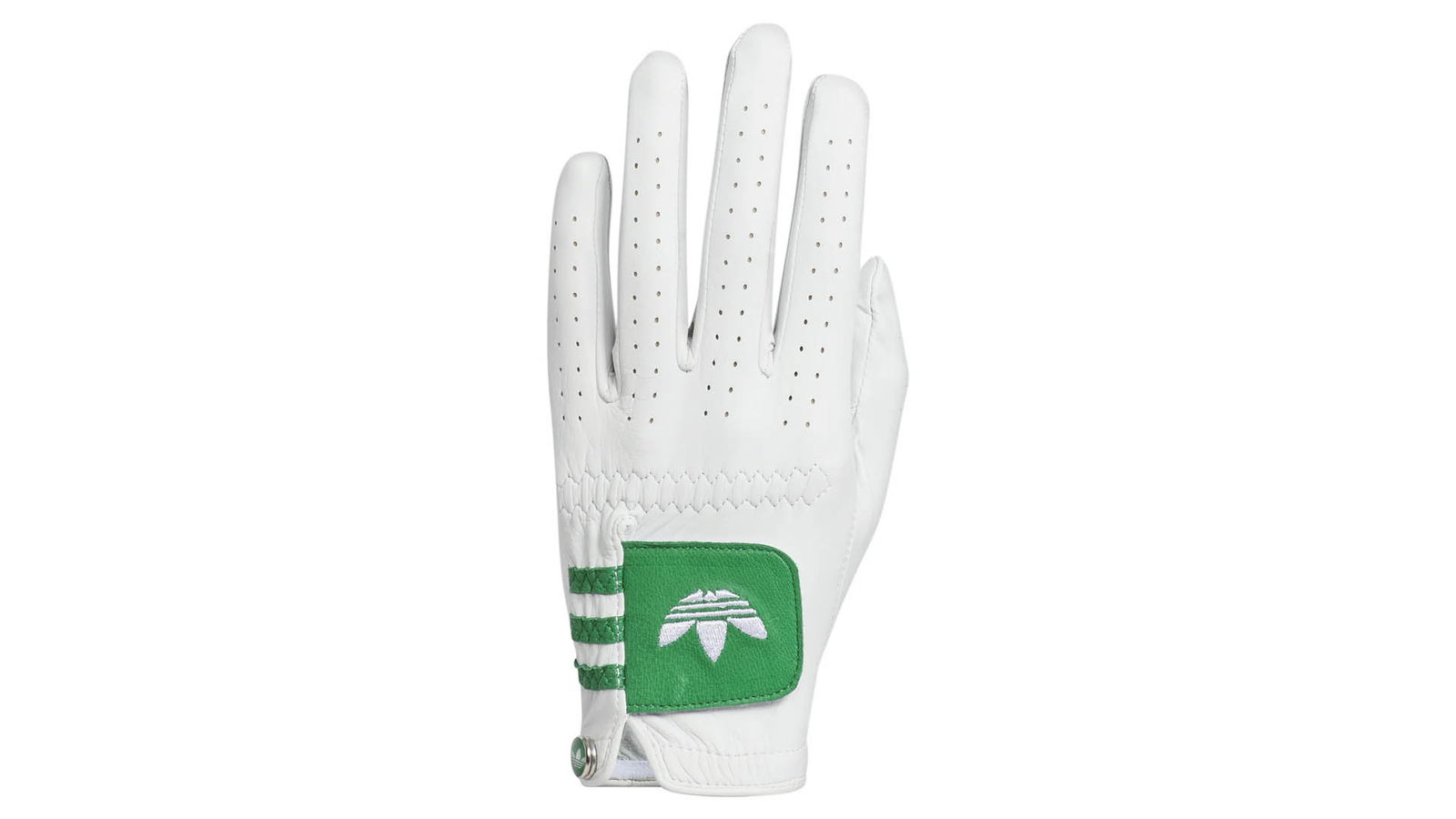
adidas Originals Golf Leather Glove
Pros
- Unmatched style points
- Range of funky colours
- High-end leather
- Added ball marker is a nice touch
Cons
- Lacks the tech of a modern tour glove
Price: £23
Forming a key part of adidas's much-acclaimed Originals Golf revival earlier in the year, the Originals leather golf glove is a simple, affordable way to add some sartorial flair to your game.
The old-school look is matched by its classic construciton, with a soft sheep leather providing great grip and a timeless fit. Look closely and you'll find that the Originals Glove actually shares much of its construction with adidas's Pro Leather glove, with the same ventilation, stretch inserts and branded tab closure for tour-level performance.
Equal parts style and substance, the Originals glove comes in a vast array of retro-inspired colours, with the classic white and green complemented with a range of blue, brown and even pink hues to suit any taste.
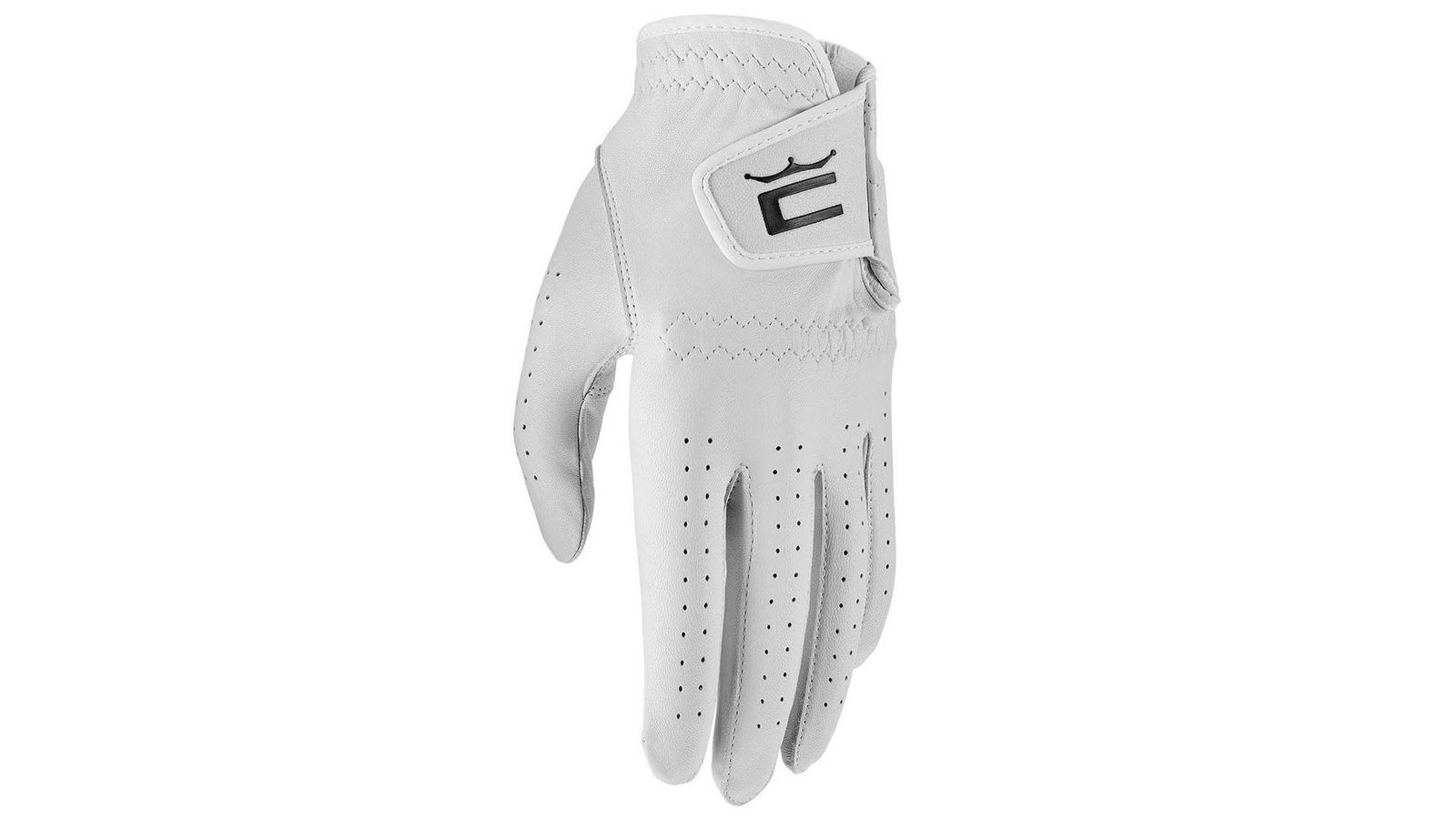
Cobra Pur Tour
Pros:
- Great Value
- Premium looks and feel
Cons:
- Not great in wet weather
Price: £20
The Cobra Pur Tour is the brand's premium Tour glove and it certainly delivers elite level feel and performance.
Made using premium Cabretta leather, the Pur Tour provides a snug and soft fit that offers long lasting durability and excellent breathability.
The Cobra King logo looks great on the velcro tab, and the tailored cuff also offers additional comfort around the wrist.
All in all the Pur Tour is an excellent golf glove, and coming in slightly cheaper than the rest of the options on this list, it's good value, too.
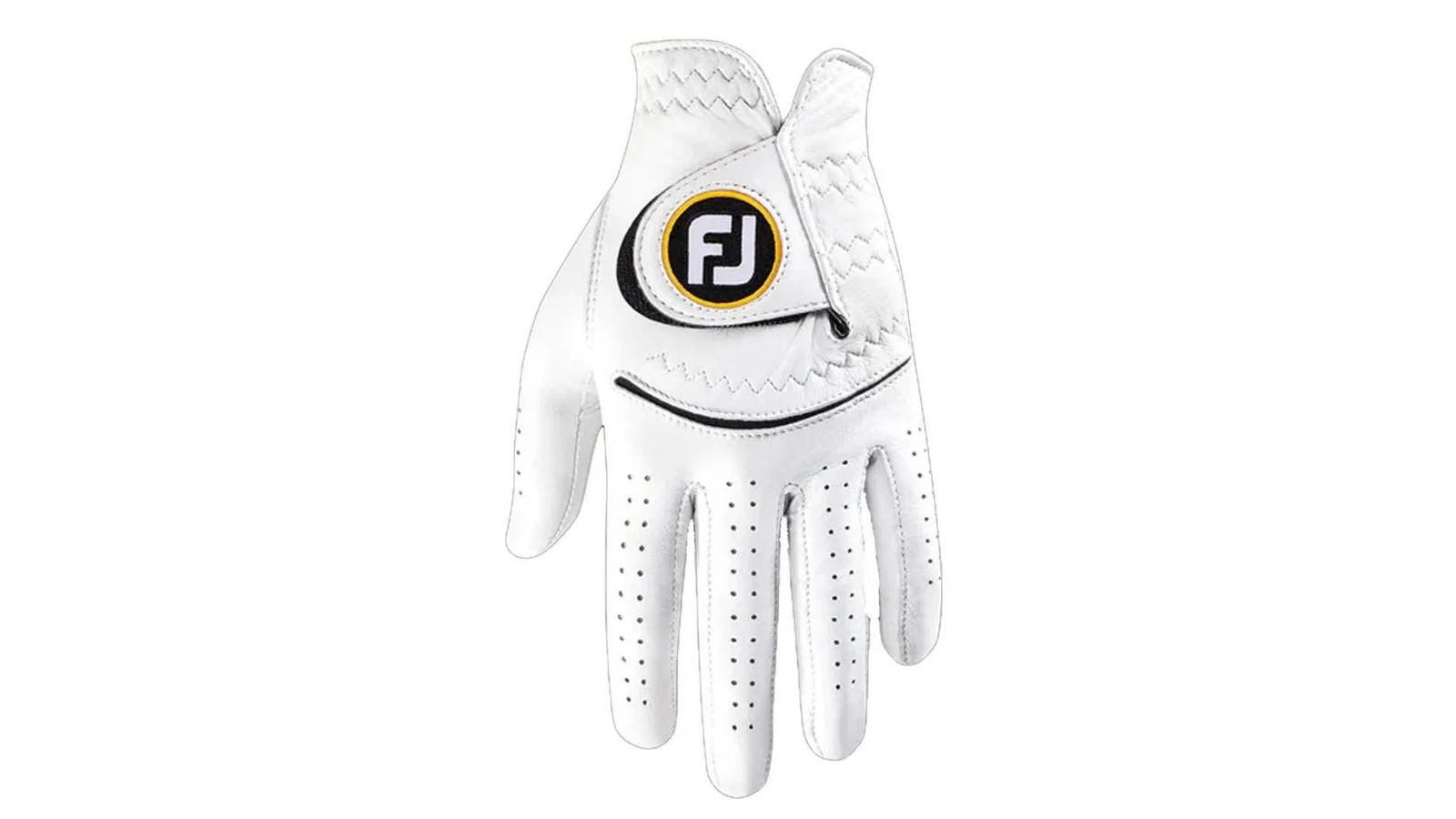
FootJoy StaSof
Pros:
- Great all-rounder
- Sturdy build
- Really does stay soft for ages
- Well-placed ventilation
Cons:
- Not quite as luxurious as Cabretta gloves
Price: £25
Despite the natural assumption that cabretta leather golf gloves dominate on tour, FootJoy's StaSof is a popular choice among the pros, who appreciate the way it combines a durable, high-quality leather with well-engineered tech to keep you cool and comfortable in the most intense conditions.
The all-leather construction retains its feel and shape round-after-round, with the palm and major grip points enhanced further to provide unmatched feel in conditions where even cabretta leather gloves start to lose their finesse.
Given the added durability and tech, it represents one of the best value propositions on this list if you see a long-lasting glove as a true investment.
The best synthetic leather golf gloves for 2025
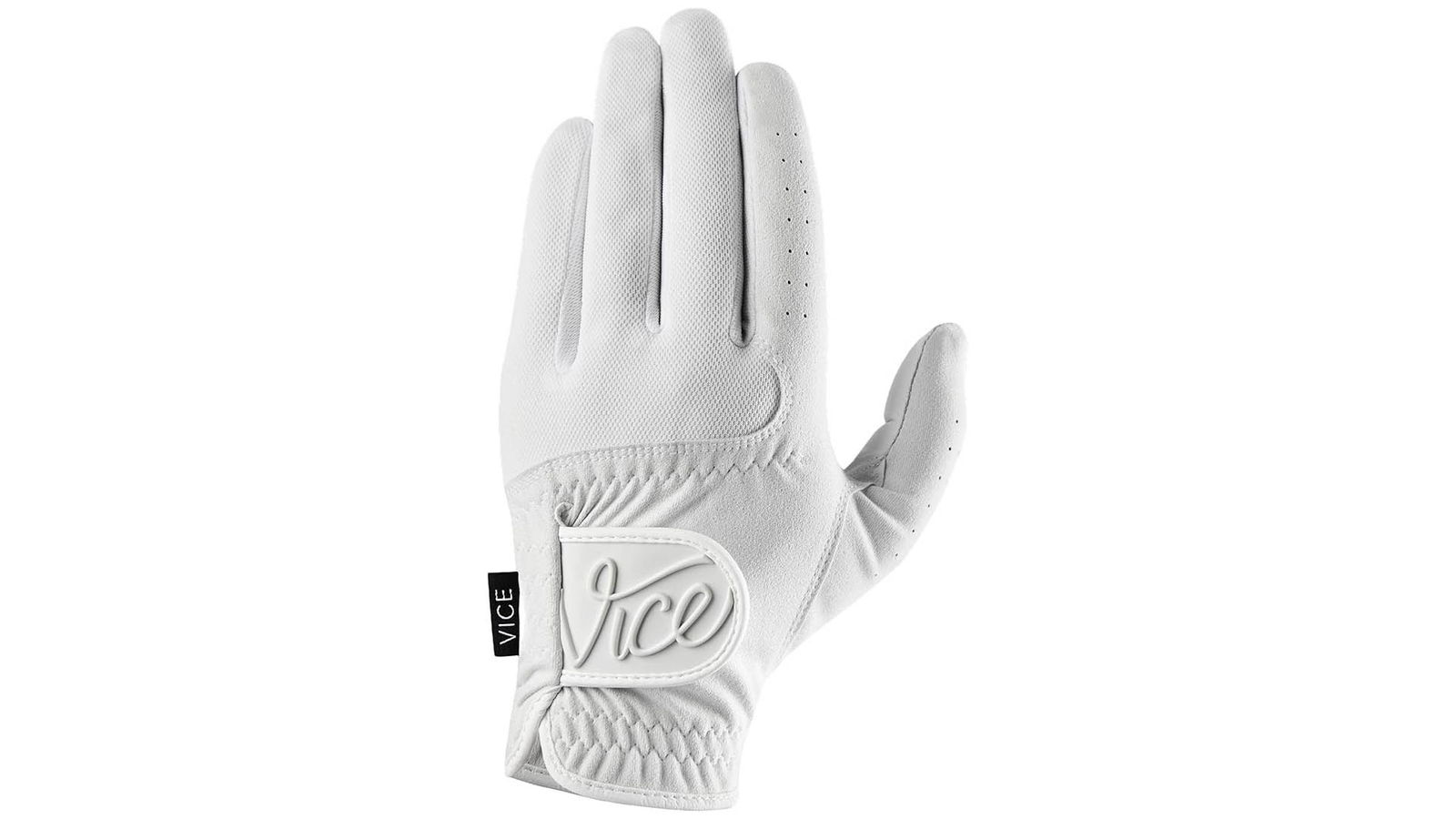
VICE Golf Duro
Pros
- Suede-like construction is unique and luxurious
- Great range of colours and designs
- Loads of breathability
- Durable for a synthetic glove
Cons
- Can be pricey if you don't buy direct through them
Price: £11.49
Ever the disruptor, VICE Golf didn't rest on their laurels when developing an affordable synthetic glove to go up against the major players.
What they've come up with instead is something quite innovative: a glove that combines a suede-like synthetic palm with a big panel of breathable mesh for comfort in all conditions.
The synthetic material feels soft, thick and luxurious for a synthetic glove, with bags of durability and grip, while the choice of an all-white option offset by some seriously cool colour combinations makes for a great change-up.

FootJoy WeatherSof
Pros
- The number 1 glove in the world
- Perfect blend of performance and affordability
- Reliable, accessible and easy to find just about anywhere
Cons
- Durability is an issue
Price: £11.49
The FootJoy WeatherSof is pretty much the default first glove for most golfers, ubiquitous in Pro Shops and invariably the choice most players reach for when they need an affordable, high quality glove at short notice.
The WeatherSof feels soft and supple when fresh out of the packet, while the mesh inserts add a little bit of breathability. And at little more than a tenner, its among the best-value gloves you can buy.
However as plenty of golfers have discovered, the FiberSof material, while comfortable, starts to display wear and tear pretty quickly.
Even so, it remains the best-selling glove in the world for a reason, with more than 90 million of the things now occupying golf bags around the globe.
The best warm-weather golf gloves for hot days
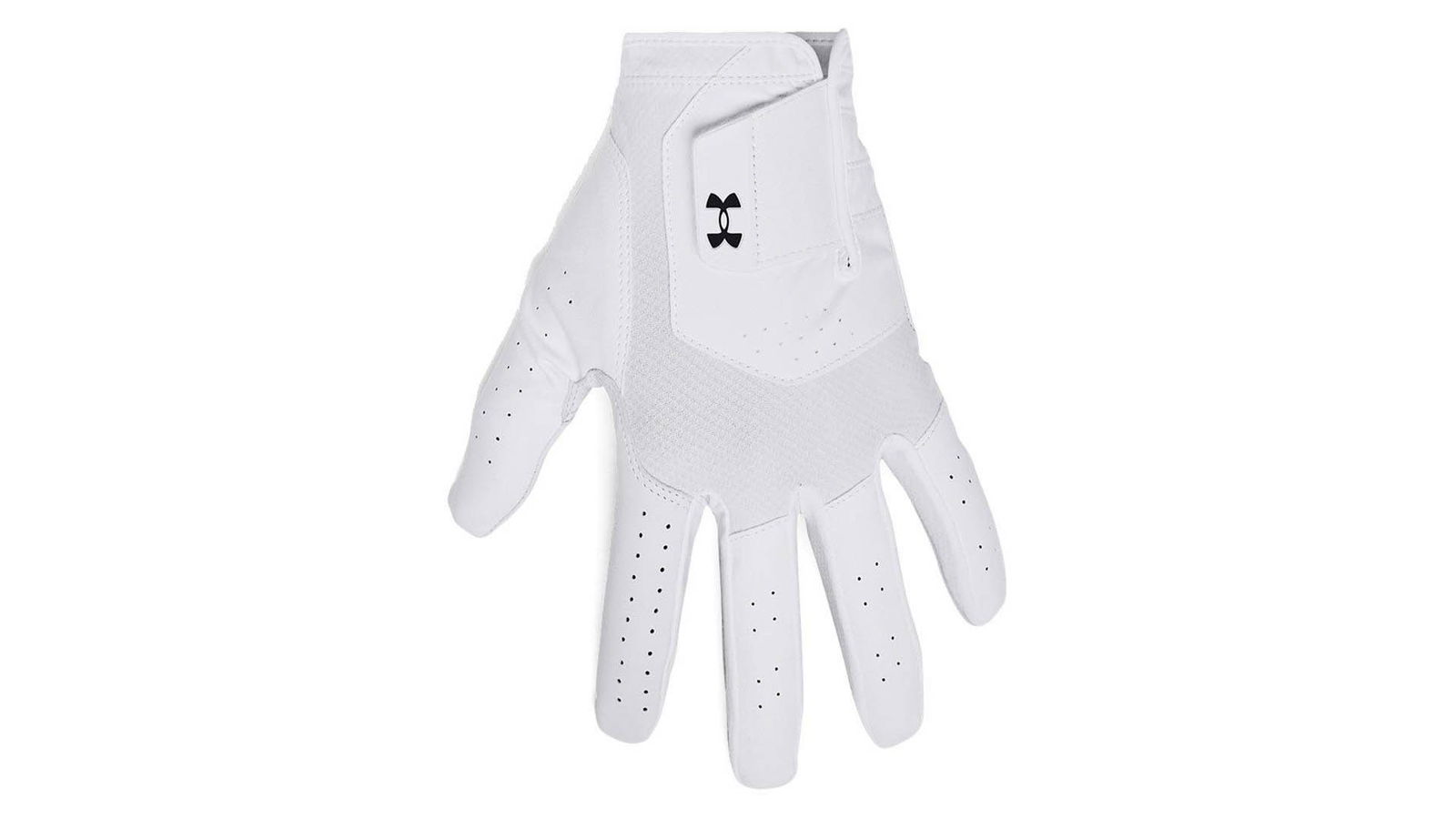
Under Armour Iso-Chill Golf Glove
Pros:
- Genuinely amazing performance in hot conditions
- Cool, futuristic look
Cons:
- Golf purists may prefer a 100% leather glove
- Might prove too breathable in colder climates
Price: £14.99
Under Armour's Iso Chill glove is designed to be worn for particularly hot rounds of golf. The palm is constructed from Cabretta leather to provide high-end touch, but also features panels of Under Armour's Tour Cool across the back of the hand which pull heat away from the skin to make you feel cooler.
The innovative design isn't going to save you in 40 degree heat, however it does help prevent your hands from sweating too much, and will extend the life of your glove and the condition it's in when playing.
The Iso Chill glove is also quite a futuristic looking glove, and in our eyes one of the best looking right now.
The fit is snug, the grip is great, and as previously mentioned, this is one of the more durable gloves on this list, and great value.
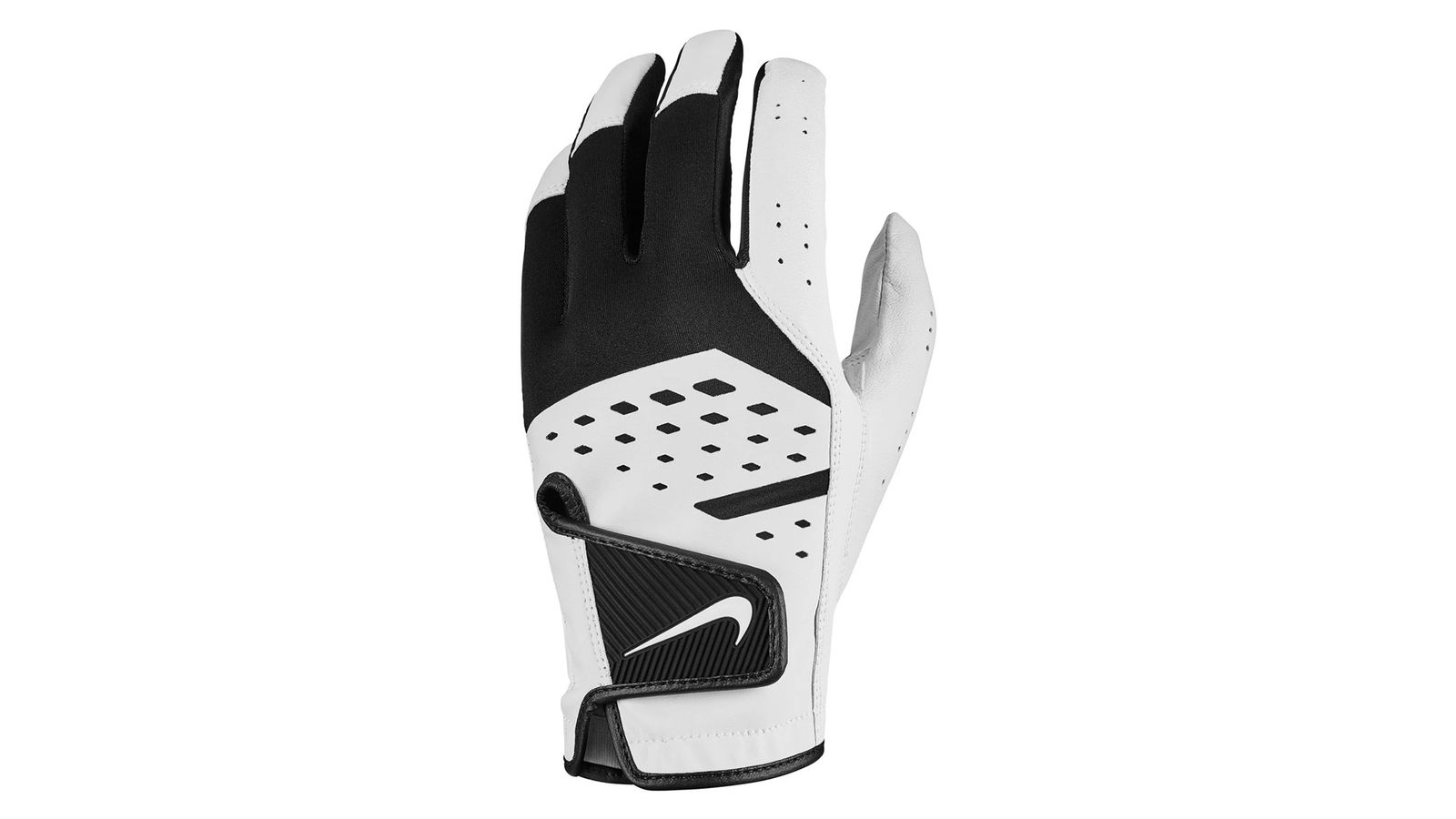
Nike Tech Extreme 7
Pros
- Loads of ventilation
- Genuine leather palm for great feel
Cons
- Tech-heavy look won't be for everyone
- Expensive for a mostly synthetic glove
Price: £22.99
Tech extreme by name, extreme tech by nature, Nike have pulled out all the stops with their mid-range Tech Extreme 7, combining a synthetic construction with an all-leather palm for tons of versatility.
The black mesh ventilation is prominent across the backhand of the glove, with added stretch inserts allowing you to find a comfortable fit instantly every time you pull it on.
It's not one that'll appeal to the purists, but if you want plenty of performance in a modern-looking design, the Tech Extreme 7 will serve you well.
The best winter golf gloves for cold climates
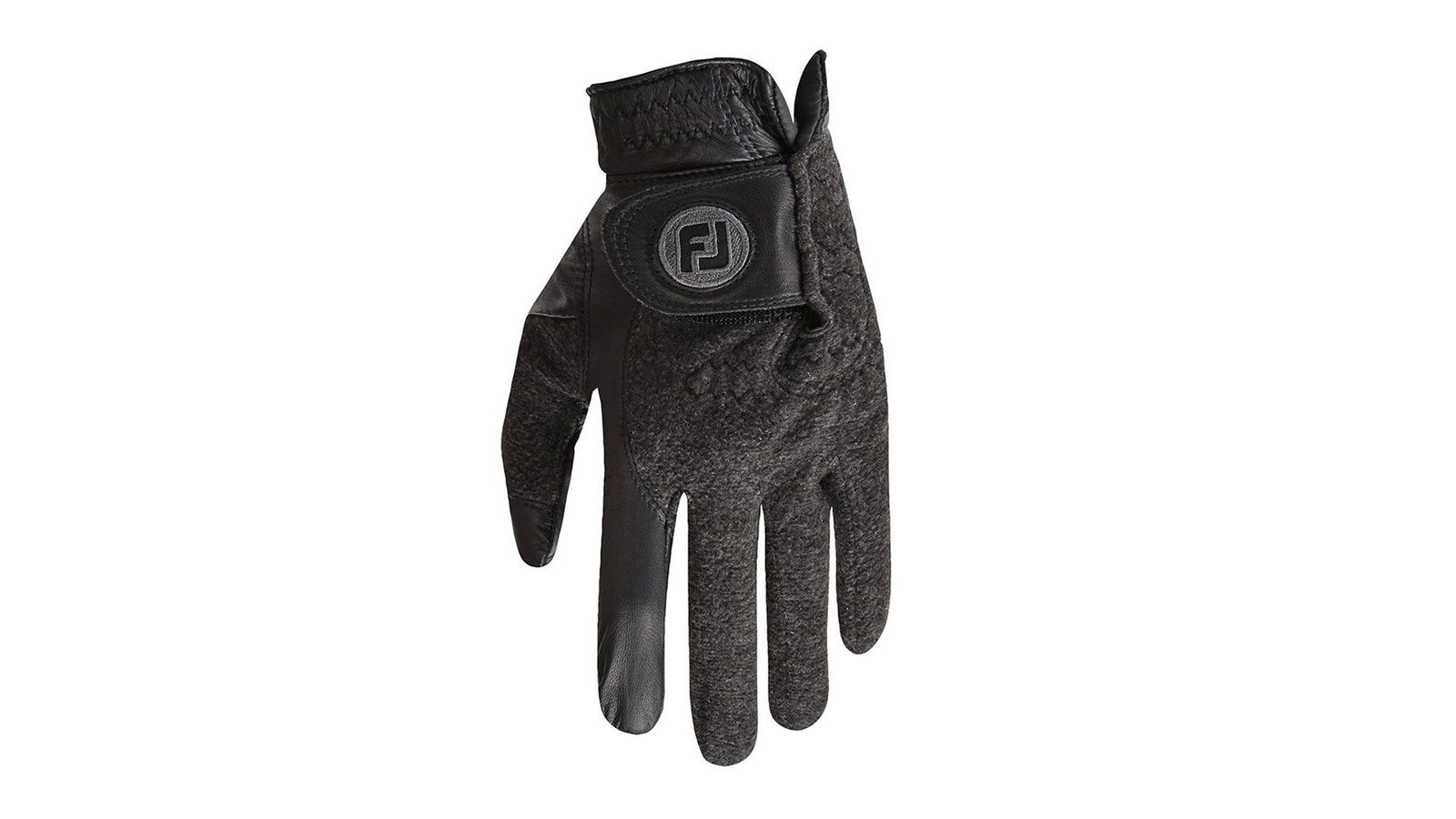
FootJoy StaSof Winter
Pros
- Soft and warm
- Cabretta palm keeps you feeling connected
- Elastic cuffs make getting them on and off easy on cold days
Cons
- Expensive
Price: £55
While paying more than £50 for a pair of golf gloves feels like a sizeable outlay, those who have experienced the luxury of J Lindeberg's winter gloves will attest it's worth it.
Developed by FootJoy to perform as well in icy conditions as anywhere else, they combine low-profile luxury with the tech and premium materials to ensure comfort and warmth on every round.
Unlike many winter gloves, these keep you feeling connected to the club through the use of an all-leather palm, while a fleeced backhand provides resistance to wind and rain to keep you swinging comfortably even in the harshest of chills.
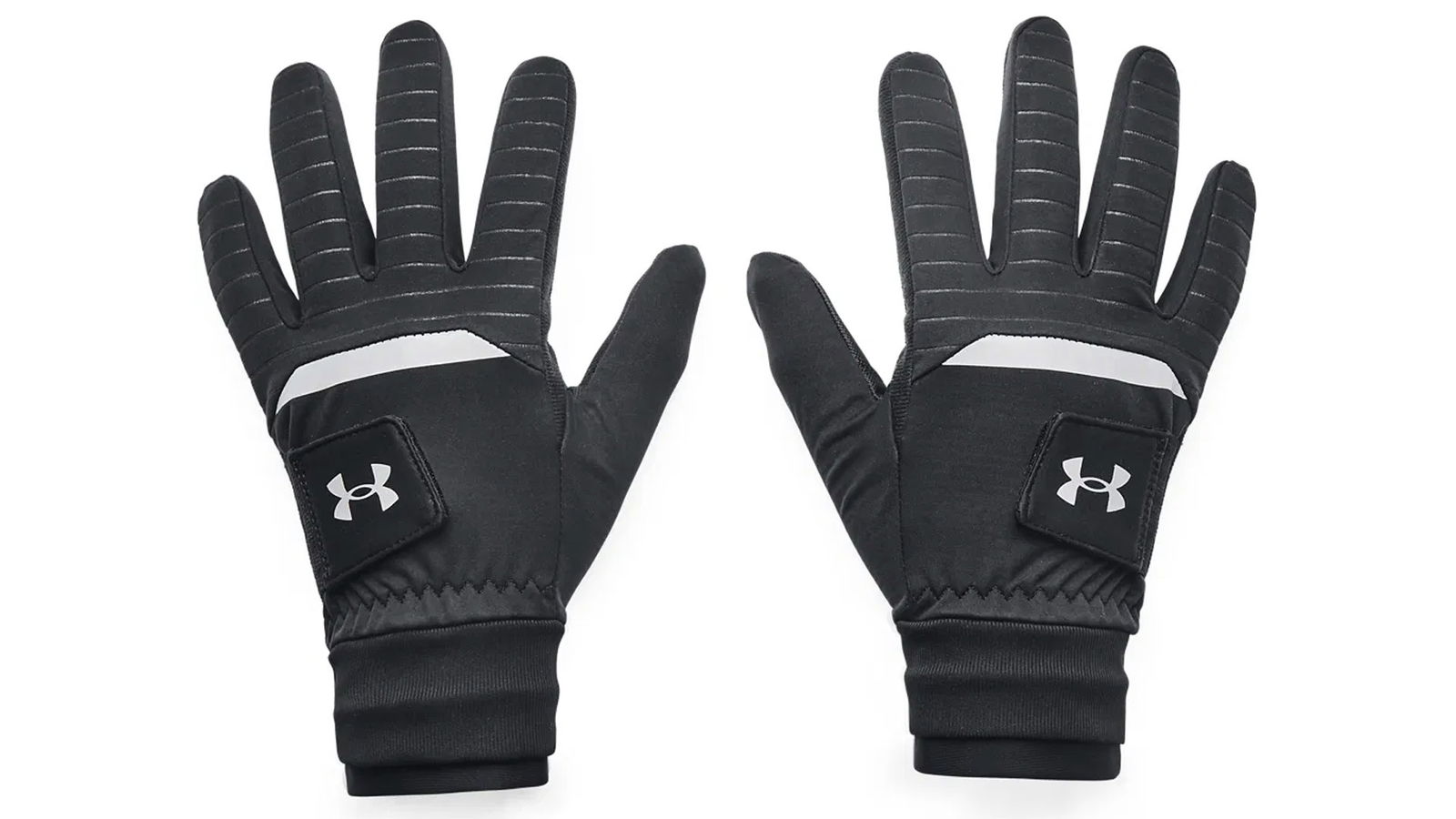
Under Armour ColdGear Infrared Golf Gloves
Pros
- Affordable and effective
- Great warmth without the added bulk
Cons
- Lack the tactility of a leather-palmed glove
Price: £25
Our pick for the best value winter golf gloves on the market right now, Under Armour's ColdGear Infrared gloves fit the bill perfectly as an affordable option to throw in your bag in case of a random cold snap.
Low-profile, soft and warm, the ColdGear Infrared gloves fit a surprising amount of tech into a relatively cheap package. The ColdGear Infrared® lining helps retain body heat without adding bulk, while a water-resistant 3-layer bonded exterior fabric is lightweight, durable and provides good grip in changeable conditions.
Extended ribbed cuffs and reflective details are also great quality of life editions, making these a fantastic all-round package to have literally on-hand in a pinch.
The best golf rain gloves for wet rounds
Cobra StormGrip
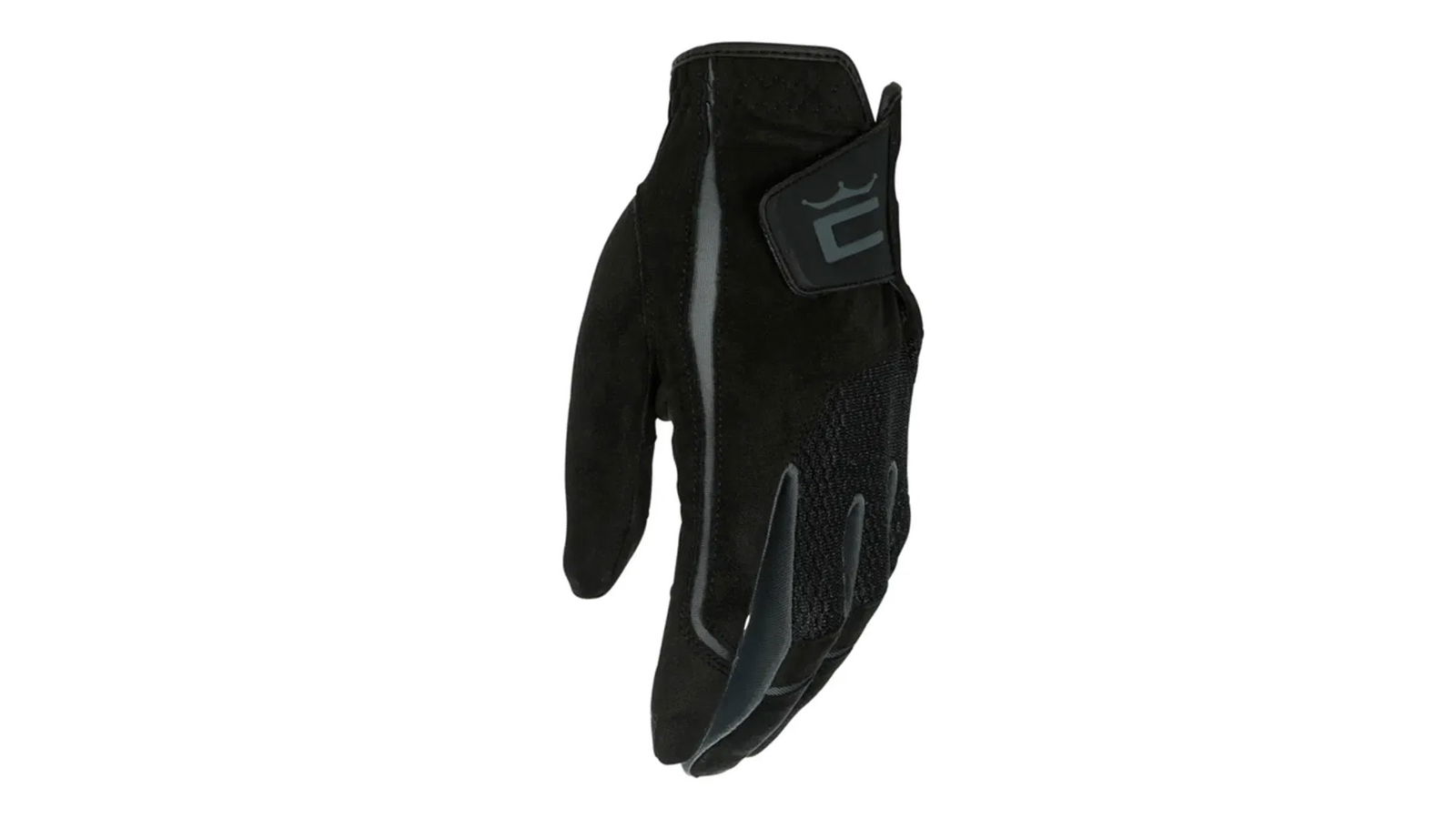
Pros
- Great grip and feel in wet conditions
- Water resistance keeps you dry in the worst rain surges
Cons
- None to report
Price: £23
Cobra's StormGrip range does pretty much everything you could hope to in a modern-day rain glove, offering feel and feedback in a grippy, waterproof package.
The waterproof membrane keeps your hands dry and warm in showers and surges alike, giving you the confidence to swing with power when traditional leather gloves would start to go wayward, while the mesh construction around the glove is breathable, dries quickly and provides exceptional comfort.
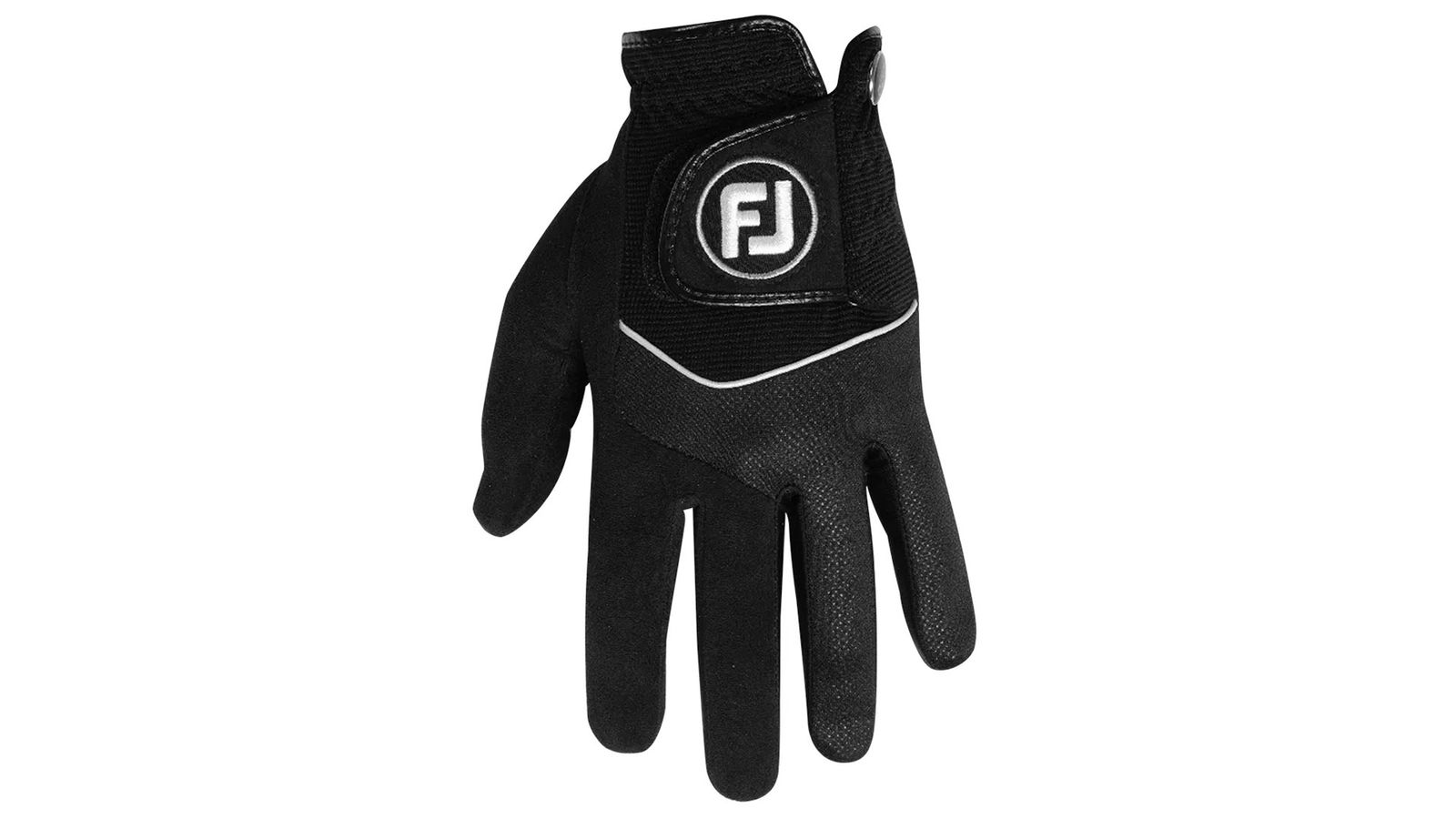
FootJoy RainGrip
Pros
- Best-in-class wet weather grip
- Water resistant and quick-drying
- Available as a single or a pair
Cons
- None to report
Price: £22.99
Honestly, there's not a lot to separate FootJoy's RainGrip from the Cobra StormGrip above, with the difference coming mostly down to aesthetics.
If you prefer the timeless look of the FootJoy and err towards the more established brand in the glove market, the RainGrip will serve you well.
While you sacrifice a little of the feel you'd get in one of the brand's leather gloves, the RainGrip more than make up for it with incredible wet weather grip, water-resistance and quick-drying comfort.
FootJoy have also done golfers a service by offering the RainGrip either as a single or a pair, providing a proper option for those who need a boost in grip but don't like the feeling of having both hands enclosed.
What are the key differences between Cabretta leather and synthetic golf gloves?
Cabretta leather golf gloves are typically considered the industry standard for high-end golf gloves, made of a certain type of ultra-soft sheep's leather that hugs your hands and provides a second skin-like fit. Cabretta leather is prized for its softness and comfort, and quickly breaks in to mould to your hand and provide a more luxurious look and feel on the club.
Synthetic leather gloves, conversely, are offered as a more affordable option for golfers on a budget, offering softness and comfort in a more budget-conscious package. Synthetic leather gloves tend to stiffen up slightly more between uses and take longer to break in, but due to their construction are often more durable than thin leather gloves, making them a great choice for golfers who want a reliable option that doesn't break the bank.
Some manufacturers bridge this gap by offering gloves made of both materials, most often combining a synthetic backhand with a genuine leather palm in an effort to save costs and maintain a soft, luxurious feel.
How do we test golf gloves?
In order to test the performance of each golf glove and determine its suitability for our guide, GolfMagic spends extensive time wearing each glove both out on the course and in the confines of the driving range.
During our time testing, we assess all of the features of each glove, including the design, comfort, tightness and durability.
Each of these features is crucial, and only the gloves we deem suitable in each of these categories find their way into this list.
To ensure a thorough and fair test, we wear the gloves glove not only for iron shots when hitting drivers, fairway woods and wedges, too. Where applicable, we also test gloves in cold and wet weather conditions to find out if the golf gloves could perform in less-than-ideal conditions.
How often should you change your golf glove?
In general, golf gloves are very durable. If you invest in a good one, they can last several months and maybe years in your golf bag without becoming worn to the point of no longer being usable.
There is no time frame as to when you should replace your golf glove. If the leather or synthetic material is starting to become worn, then it's time to replace your glove to ensure optimum grip and comfort out on the course. If it has no damage and isn’t causing you discomfort, then crack on.
There will come a day when your golf glove rips as a result of wear and tear or weather damage. This is most likely to happen in the winter when wet weather is more common, however golfers who play more regularly will naturally wear through gloves at a faster rate.
If you own a pair of waterproof gloves, you will want to replace them when their durability begins to diminish and they fail to protect your hands from cold and wet conditions.
There is no need to buy a new golf glove if the one you have now is in perfect condition. However, we would always recommend that you have a spare pair of gloves in your bag just in case you should ever need one on the way around the course.
Can you play golf without a glove?
You can certainly play golf without a glove.
A number of players have done exactly that on the PGA Tour down the years, most notably Ben Hogan, Fred Couples and Lucas Glover (ironically!). In the summer, when your grips are less slippy and your clubs are dry, some golfers feel that the grip of their palms is enough to get them around the golf course.
This is not something we generally advise though, as extra grip on the club can make all the difference to your game.
But like we said, golf gloves provide good grip and if anything, they also provide protection from your hands rubbing and causing blisters. If you play particularly regularly, the friction on your hands from the tough grips equipped on golf clubs can cause undue stress and fatigue, including blisters..
Golf gloves also help your game in wet weather. If you haven’t got a glove on, the clubs can slip into your hands. They provide a significant contribution to your game, which is why it is important to have one or two in your bag.
Check out our full range of golf apparel guides below:
- The Best Golf Polo Shirts
- The Best Golf Trousers
- The Best Golf Rain Trousers
- The Best Golf Hoodies
- The Best Golf Mid-Layers
- The Best Golf Hats
- The Best Golf Shoes
- The Best Spikeless Golf Shoes
- The Best Spiked Golf Shoes
- The Best Golf Sneakers
- The Best Winter Golf Boots
- The Best Golf Watches
- The Best Golf Umbrellas

